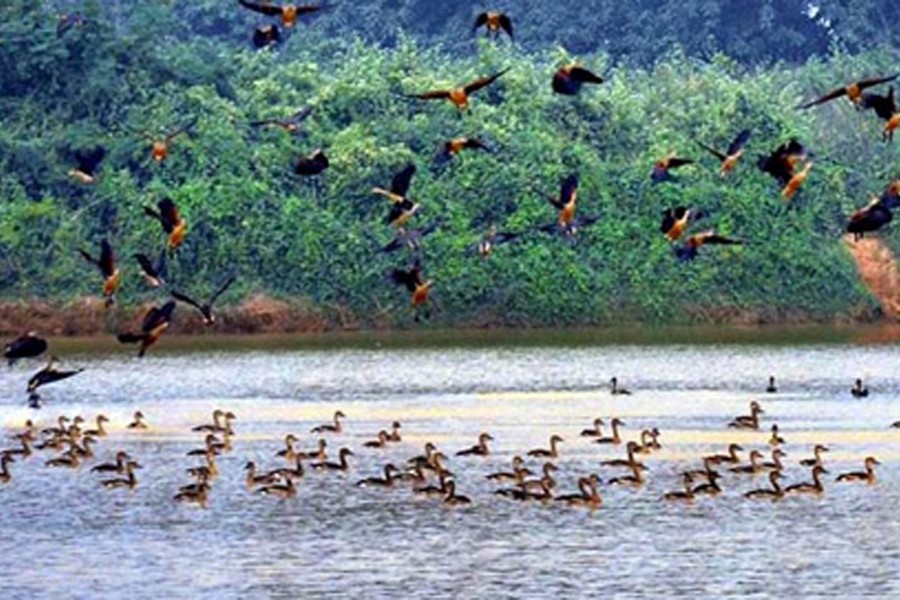With advent of the winter season, migratory birds from the Himalayan and Siberian regions are coming to water bodies of northern region, giving a pleasant look to the areas.
The riverine char areas and water bodies in Rangpur areas have worn an eye-catching look with arrival of migratory birds and their well-mannered flying and movements giving the nature a decent fleeting glimpse.
Officials and environmental experts said the number of arriving migratory birds from the colder northern hemisphere is comparatively higher this time than last year.
The migratory birds are living now on small fishes, insects, small snails and watery plants after arriving in the region.
Mamunur Rashid, Senior Coordinator (Agriculture and Environment) of RDRS Bangladesh said the number of arriving migratory birds declined in recent decades following adverse impacts of climate change, reports BSS.
“The average temperature is continuously rising in the Himalayan, Siberian, Nepal, Xinxian and Mongolian regions making those places habitable to some extent for birds even during the winters,” Rashid said citing international survey reports.
The temperature starts falling sharply there from November making those regions hardly habitable for birds in December, January and February months.
“As a result of increasing cold in those regions from November, migratory birds are arriving in comparatively higher number in the water bodies of Bangladesh this time,” Rashid added.
Director of Begum Rokeya University unit of the Riverine People Dr Tuhin Wadud said the migratory birds are not seen in uncountable numbers in the water bodies like 25 to 35 years back.
“However, it is good news that the number of arriving migratory birds in higher this time despite reduction in the number and areas of water bodies and depletion of many species of sweet water fishes from marshes,” he said.
He blamed climate change that caused drying-up of the rivers creating threats to bio-diversity, ecology and environment making imbalance in the nature forcing extinction of many species of fishes, insects, birds and some animals.
“If the situation continues, the number of arriving migratory birds might reduce and their duration of stay be shortened as the water bodies would dry up much earlier before end of the winter season,” Dr Wadud added.
Superintendent of Ramsagar National Garden in Dinajpur Abdus Salam Tuhin said migratory birds already arrived this time in the ‘Ramsagar Dighee’ having 77.90 acres of water body with 68.54 acres of banks with gardens all-around.
“The number of visiting tourists to Ramsagar National Garden has increased now as the migratory birds of different colours are creating pleasant moments by flying in the air and coming down on the water again and again,” he added.
Talking to BSS, Horticulture Specialist of the Department of Agriculture Extension Khondker Md Mesbahul Islam said the number of arriving migratory birds in the riverine areas is comparatively higher this time compared to the previous years.
“A good number of ‘Bali Duck’, ‘Samukal’, Bright, Rose King, Bali Lenja, ‘Chity’, ‘Sorail’, ‘Boikal’, ‘Nilshir’, ‘Piyang’, ‘Pankouri’, ‘Rangamuri’, Pintail, ‘Pantamukhi’, ‘Chokha-chokhi’ and ‘Khonjona’ are found flocking to the riverine char areas now,” Islam said.
Chairman of Chilmari upazila in Kurigram Shawkat Ali Sarker, Bir Bikram, stressed on totally stopping poaching, catching and selling of migratory birds to ensure their arrival, travel and stay safer in the northern region.


